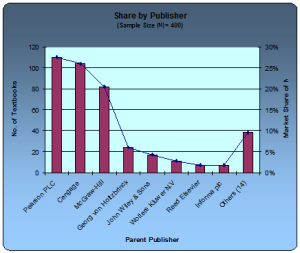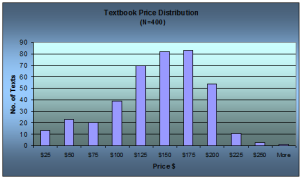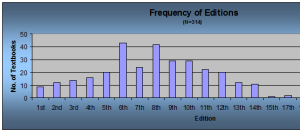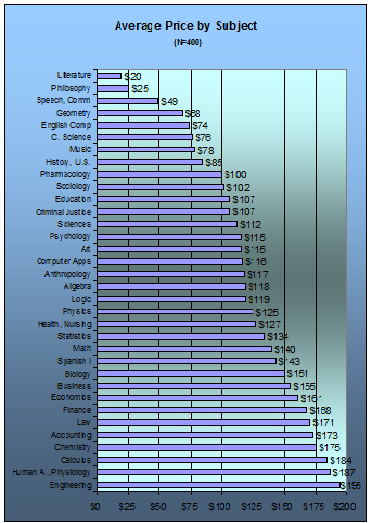This is an example of cross-mapping real world course syllabi to an open textbook, demonstrating that the open textbook covers all or most of the course content, thus permitting easy adoption and saving students thousands of dollars.
We compared Rutger University’s undergraduate Biology Course syllabi with our open biology textbooks. (See tables below). Rutger’s Bio 101 closely matches College Biology Vol 3 while their Bio 102 closely matches College Biology Vol 1.
Bio 101 & 102’s assigned textbook (Fall 2013) is Biology: Concepts & Investigations by M. Hoefnagels (2nd edition, 2011) Originally $225, now $39.51 used, rent $26.00 (Amazon.com).
The current edition is Biology: Concepts & Investigations by M. Hoefnagels (3rd edition, 2011) $211. Rent $94. (Amazon.com)
We’re convinced that the best choice is College Biology where the PDF is free and the print format per volume1 is only $39.20.
Why rent when you can own? Why pay 6 to 7 times more for the same content?
Depending up the next class-assigned textbook, saving range from $39.00 to $172 per student, which amounts to thousands of dollars per semester per college.
BTW – Textbook Equity’s Editors will customize any of our open textbooks to map to your class syllabus, create color textbooks, and add your own material. Output to PDF and print. (Example cross-mapping analysis below.)
Also See Textbook Equity College Services.
Service Fees. Write editors@textbookequity.org
Rutger University’s undergraduate biology syllabi cross-mapped to College Biology’s open licensed textbook volumes 1and 3.
| Bio 101 | Syllabus Topic | College Biology’s Matching Chapter(s) |
|---|---|---|
| Week 1 | Overview/Excretory System | Chapter 41: Osmotic Regulation and Excretion |
| Week 2 | Respiratory/Circulatory System | Chapter 39: The Respiratory System / Chapter 40: The Circulatory System |
| Week 3 | Nervous System/Senses | Chapter 35: The Nervous System/Chapter 36: Sensory Systems |
| Week 4 | Reproduction/ Embryonic Develop | Chapter 43: Animal Reproduction and Development |
| Week 6 | Immune System | Chapter 42: The Immune System |
| Week 7 | Plant Anatomy & Function | Chapter 30: Plant Form and Physiology |
| Week 8 | Plant Reproduction/Development | Chapter 32: Plant Reproduction |
| Week 9 | Plant Diversity | Chapter 25: Seedless Plants, Chapter 26: Seed Plants |
| Week 10 | Fungi | Chapter 24: Fungi |
| Week 11 | Animal Diversity | Chapter 27: Introduction to Animal Diversity |
| Week 13 | Population Ecology | Chapter 45: Population and Community Ecology |
| Week 14 | Communities & Ecosystems | Chapter 46: Ecosystems |
| Week 15 | Biodiversity | Chapter 47: Conservation Biology and Biodiversity |
______________________________________________________________________________
| Bio 102 | Syllabus Topics | College Biology’s Matching Chapter(s) |
|---|---|---|
| Week 1 | Overview/Chemistry of Life | Unit 1. The Chemistry of Life (Chap 1, 2, 3) |
| Week 2 | Cells | Unit 2. The Cell (Chap 4,5) |
| Week 3 | The Energy of Life | Chapter 6: Metabolism, Chapter 7: Cellular Respiration |
| Week 4 | Photosynthesis | Chapter 8: Photosynthesis |
| Week 6 | Mitosis & Cell Cycle | Chapter 10: Cell Reproduction |
| Week 7 | Meiosis & Sexual Reproduction | Chapter 11: Meiosis and Sexual Reproduction |
| Week 8 | DNA & Gene Function | Chapter 14: DNA Structure and Function |
| Week 10 | Patterns of Inheritance | Chapter 12: Mendel’s Experiments and Heredity, Chapter 13: Modern Understandings of Inheritance |
| Week 11 | DNA Technology | Chapter 17: Biotechnology and Genomics |
| Week 12 | From the Big Bang to Life on Earth | Chapter 20: Phylogenies and the History of Life |
| Week 13 | Macro and Microevolution | TBD |
| Week 14 | Adaptation & Speciation | Chapter 18: Evolution and the Origin of Species |
| Week 15 | Animal Behavior | TBD |




